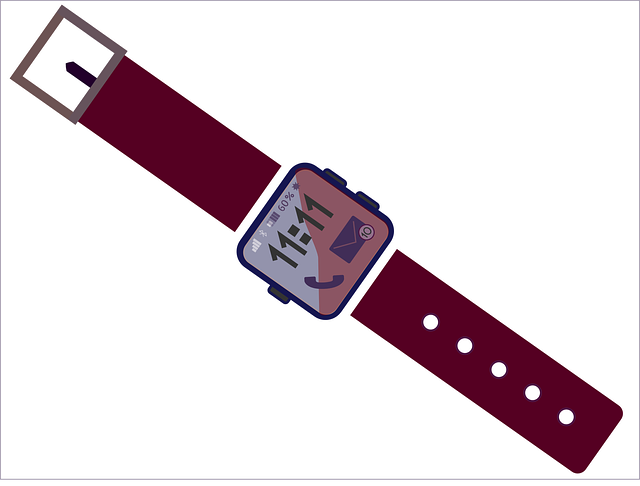Share This Article:

How Wearable Tech and Virtual Care are Transforming Claims, from Engagement to Outcomes
28 Sep, 2023 WorkersCompensation.com

Sarasota, FL (WorkersCompensation.com) -- Last week's National Workers' Compensation and Disability Conference in Las Vegas set the stage for an impactful dialogue about the transformational potential of wearable technology and virtual care in the workers' compensation landscape. The panel consisted of thought leaders—Gregory Hamlin, Senior Vice President and Chief Claims Officer of Berkley Industrial Comp; Raja Sundaram, CEO of Plethy, Inc.; and Bill Zachry, Board Member of SCIF. These experts offered a comprehensive overview, diving deep into the opportunities and challenges of integrating technology into patient care and claims management.
Raja Sundaram, started the session with a comprehensive dive into the role of wearable technology in healthcare. He didn't simply touch upon the subject but provided a detailed analysis. "Imagine living in a world where our wearables are more than step counters or calorie trackers. Imagine having real-time health metrics on your wrist, enabling timely intervention that could save lives," Sundaram stated.
Building upon Sundaram's points, Gregory Hamlin expanded on how wearables could bring about a revolutionary shift in patient care and medical treatment. Hamlin emphasized that wearables offer more than just real-time data collection; they are critical bridges between healthcare providers and patients. "It's about taking the data and translating it into actionable insights that empower both patients and healthcare providers to collaborate more effectively on treatment plans," Hamlin emphasized.
The theme of data and connectivity was then picked up by Bill Zachry, who elaborated on the importance of this duo in healthcare outcomes. "Collecting data is one aspect. The real power lies in connectivity, in how that data is shared and used to make real-time decisions, both in clinical settings and at home," Zachry observed.
Zachry further elaborated on how this connectivity becomes even more potent when it's seamless. He stressed that integrating wearables and virtual care into the healthcare ecosystem could revolutionize how patients interact with healthcare providers. "With a continuous stream of data, medical teams can offer immediate advice or interventions, making healthcare more proactive rather than reactive," Zachry concluded.
What was particularly enlightening was the concerted focus on the psycho-social aspects of healthcare. Sundaram explained that health metrics only tell one side of the story. "A person's emotional well-being, psychological state, life situations—all these have a significant impact on health outcomes," Sundaram noted.
Gregory Hamlin extended this line of thought, suggesting that the real power of wearable technology lies in its ability to offer healthcare providers a holistic view of a patient's health status. "Having immediate access to contextualized data allows medical practitioners to exercise greater empathy and sensitivity, making care more personalized and humane," Hamlin added.
With his wealth of experience in claims management, Gregory Hamlin presented a financial perspective to the conversation. Using data from the National Safety Council, Hamlin unpacked the astronomical costs associated with healthcare. "Medical costs, wage and productivity loss, administrative expenses—they all add up to create an enormous economic burden," he illustrated. Hamlin contended that these costs could be significantly reduced through predictive analytics enabled by wearables.
Bill Zachry veered the conversation into the realm of barriers that currently impede optimal healthcare delivery. He openly spoke about significant challenges like lack of access to care, the disjointed flow of data, and the absence of real-time recovery visibility. Zachry remained optimistic that technology holds the keys to a brighter healthcare future despite these obstacles. "Technology offers unprecedented solutions to age-old problems. The future lies in using technology to eliminate these barriers and streamline care delivery," he advised.
Sundaram circled back to discuss the vital aspect of the healthcare providers' needs. "While patients stand to gain significantly from wearable tech and virtual care, let's not forget the demands and needs of the healthcare providers themselves," Sundaram pointed out. He emphasized that doctors and therapists require not just any data but quality data that can lead to better decision-making leading to more effective and timely interventions.
Raja Sundaram took some time to delve into the often-overlooked perspective of caregivers. Sundaram acknowledged that caregivers, whether family members or professional aides, play a crucial role in the overall care management system. "Wearable technology doesn't just offer insights into the patient's condition; it can also serve as a tool for caregivers, keeping them informed and more effectively involved in the healthcare process," Sundaram said. He pointed out that well-informed caregivers can provide more targeted and practical support, thereby improving outcomes and potentially speeding up recovery rates.
Bill Zachry raised a poignant issue, asking the audience to ponder the tech gap and ethical considerations. "As we progress with technological advancements, it's vital that we don't leave behind those who may not have ready access to high-end wearables or virtual care systems," Zachry stressed. He emphasized the need for ethical deployment of technology, ensuring it becomes a tool for universal healthcare rather than exacerbating existing disparities.
As a final touch, each panelist emphasized the responsibility we all share in actualizing the vision they had laid out. "Change is not just in the hands of healthcare providers, technology developers, or policymakers alone. It's also in yours," Hamlin passionately stated, pointing towards the audience. "We're all stakeholders in this transformative journey."
The consensus was clear: integrating wearable tech and virtual care is not 'if' but 'when.' The collective optimism hinted at an impending revolution where technology becomes a discreet yet powerful ally in the human quest for better healthcare.
More by This Author
- Mar 12, 2025
- WorkersCompensation.com
- Feb 17, 2025
- WorkersCompensation.com
- Feb 10, 2025
- WorkersCompensation.com
Read More
- Mar 26, 2025
- Liz Carey
- Jan 30, 2025
- Liz Carey
- Aug 12, 2024
- Frank Ferreri
- Aug 06, 2024
- Frank Ferreri
- Aug 05, 2024
- Frank Ferreri




